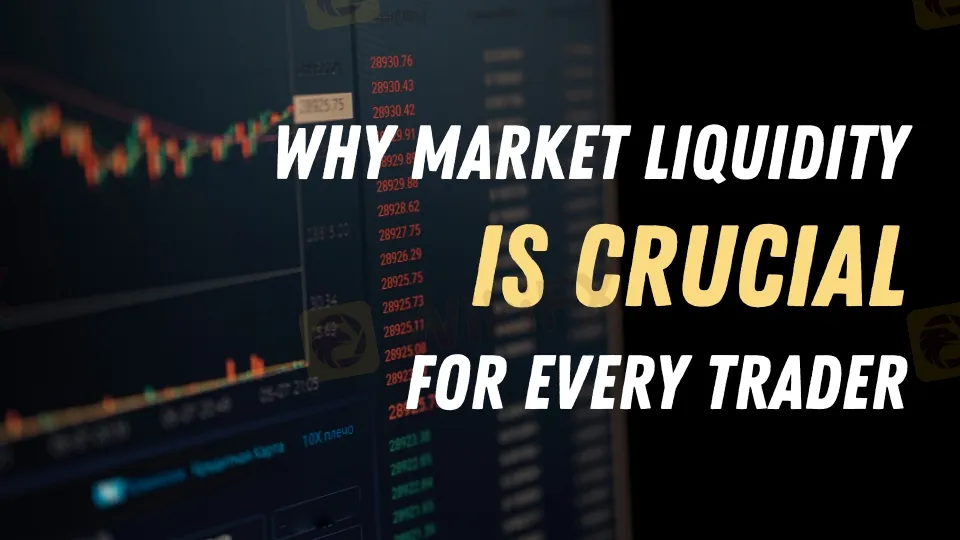简体中文
繁體中文
English
Pусский
日本語
ภาษาไทย
Tiếng Việt
Bahasa Indonesia
Español
हिन्दी
Filippiiniläinen
Français
Deutsch
Português
Türkçe
한국어
العربية
What is Market Liquidity and Why It Matters for Traders
Abstract:Learn what market liquidity is, why it matters to traders, and how supply, demand, and bid-ask dynamics influence asset prices and trading efficiency.

What is Market Liquidity and Why Does it Matter for Traders?
Liquidity is an important element in trading because it maintains markets fluid, active, and ready to satisfy the demands of investors and traders. But what is liquidity, and why is it so important? Let's look at how market liquidity works and how asset prices are always searching for it.
What is Liquidity?
At its essence, liquidity refers to the ease with which assets may be purchased and sold in a market without creating a significant movement in their pricing. Consider a crowded marketplace consisting of consumers and merchants trading merchandise. If there are a large number of traders willing to deal, the market is termed liquid.
On the other hand, an illiquid market is one with few active participants—buyers and sellers who hesitate to deal. Transactions in such a market are difficult to conduct in the absence of strong price fluctuations.
Supply vs. Demand: Liquidity in Action
Let us examine liquidity through the prism of supply and demand. Assume you have a rare, vintage Ferrari. The automobile is a one-of-a-kind model, therefore supply is restricted, but demand for such a unique item is strong. As a result of poor liquidity, the price of this automobile may surge because few buyers can afford it and the asset is scarce.

In comparison, imagine someone attempting to sell sand in Saudi Arabia. Sand is abundant there, hence there is less need for it. This overstock results in tremendous liquidity, yet prices fall since numerous vendors and buyers may readily interact at reduced prices.
The balance of supply and demand ultimately determines liquidity in every market, whether it be gold, Bitcoin, or another asset. The price of these instruments fluctuates as liquidity rises or decreases, depending on their availability at any particular price point.
Bid vs. Ask: Understanding Liquiditys Two Sides
To completely appreciate liquidity, it is necessary to understand its two sides: bid and ask liquidity.
- Bid Liquidity: Refers to the market's pool of eager buyers. When you sell an asset, you engage with bid liquidity. The more bidders at various price levels, the greater the bid liquidity, making it simpler to locate a buyer at a good price.
- Ask Liquidity: On the other side is ask liquidity, which represents sellers. When trying to purchase an asset, you engage with ask liquidity. The deeper the ask liquidity, the easier it is to buy an item at the appropriate price without generating too much volatility.
The balance of bid and ask liquidity impacts how readily a deal may take place at your desired price and if the market will respond in your favor.
Final Thoughts
Understanding market liquidity is critical for anybody who trades or invests. The link between supply and demand, as well as bid and ask dynamics, are critical in determining how effectively deals are conducted. Traders who understand how liquidity works may make better judgments, reduce risks, and improve the overall performance of their transactions.

Disclaimer:
The views in this article only represent the author's personal views, and do not constitute investment advice on this platform. This platform does not guarantee the accuracy, completeness and timeliness of the information in the article, and will not be liable for any loss caused by the use of or reliance on the information in the article.
Read more

Trading Opportunities During the Lunar New Year: Forex, Commodities, Stocks
The Lunar New Year is a time for celebrations in many countries, especially in Asia. It is also a period when markets can see different trends and movements. Traders can use this time to explore new opportunities, especially in forex, commodities, and equities listed on Bursa Malaysia, the stock exchange of Malaysia.

Participate Now in ForexCup Trading Championship
FXOpen announced the trading competition called ForexCup Trading Championship 2025 for traders. You can join, trade, and compete for exciting prizes. Here are the details

What the Movie Margin Call Taught Traders About Risk and Timing
The 2011 film Margin Call offers a gripping portrayal of the early hours of the 2008 financial crisis, set within a Wall Street investment firm. While the film is a fictionalised account, its lessons resonate strongly with traders and finance professionals. For one trader, watching the film had a lasting impact, shaping how they approached risk, decision-making, and the harsh realities of the financial world.

Why More Traders Are Turning to Proprietary Firms for Success
Over the past decade, one particular avenue has gained significant popularity: proprietary trading, or prop trading. As more traders seek to maximize their earning potential while managing risk, many are turning to proprietary firms for the resources, capital, and opportunities they offer. In this article, we’ll explore why an increasing number of traders are choosing proprietary trading firms as their preferred platform for success.
WikiFX Broker
Latest News
Why More Traders Are Turning to Proprietary Firms for Success
Unlocking the Secrets of Prop Trading: How to Succeed in Proprietary Trading Firms
What the Movie Margin Call Taught Traders About Risk and Timing
Top Forex Brokers for Low-Cost Trading in 2025
Participate Now in ForexCup Trading Championship
Musk team given access to sensitive federal payment system - reports
Trading Opportunities During the Lunar New Year: Forex, Commodities, Stocks
Currency Calculator






